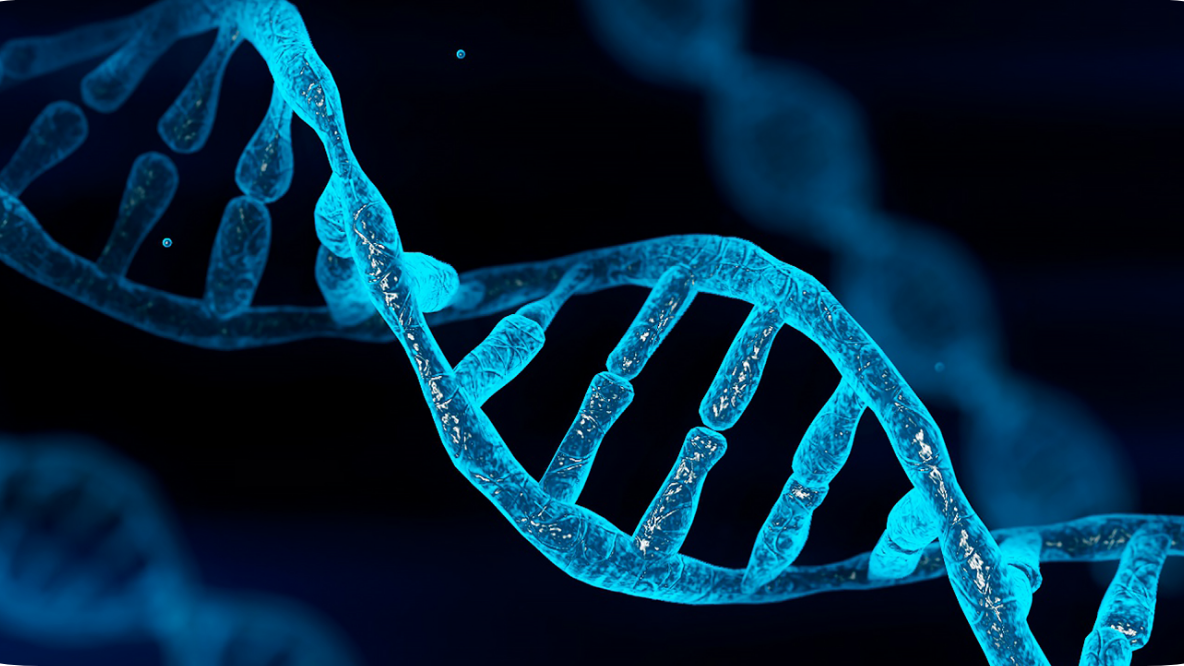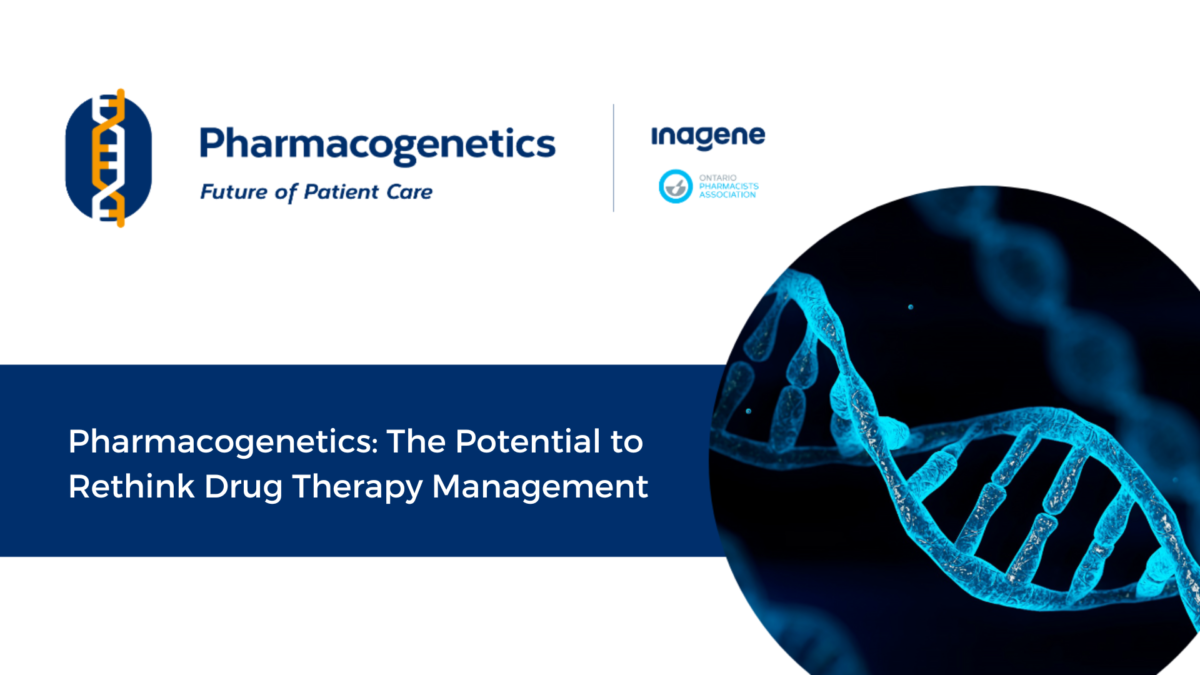The three “Rs” are drilled into all pharmacists early in our career: right medication, right dose, right patient. Pharmacists ask themselves these questions daily, routinely analyzing factors such as age, body weight, renal and liver function, along with drug interactions when assessing whether a particular medication is appropriate for a patient.
Despite this, pharmacists come to intuitively realize that there is no “one-size fits all” approach to drug therapy and that predicting a patient’s response to their medication is more difficult than it appears. This is partly explained by a patient’s genetic variability since it is estimated that genetic factors can account for 20% to 95% of the variability seen in a patient’s response to a drug.1 Until modern times, this important piece of the puzzle has remained elusive. Developments in pharmacogenetics seek to shed light on the relationship between genetics and treatments, with the potential to change the way we approach patient care by individualizing drug therapy.
What is Pharmacogenetics?
At its essence, pharmacogenetics describes how a single genetic variation can impact a patient’s response to a drug, including their drug metabolism. The term pharmacogenomics is sometimes used interchangeably with pharmacogenetics, but more accurately refers to the interplay between an individual’s genome and their response to drug therapy.1

Clinical Application of Pharmacogenetics and The Role of the Pharmacist
The bulk of research done in pharmacogenetics focuses on the cytochrome P450 (CYP) family of liver enzymes. CYP enzymes are responsible for breaking down many different classes of drugs, and, therefore, variation in the genes that code for these enzymes can affect a patient’s drug metabolism.1 The premise of pharmacogenetics is that through a patient’s test results, clinicians can better understand how that patient will metabolize a particular drug and proactively predict a medications effectiveness and identify safety risks for that individual.
As the medication experts, pharmacists can play a critical role in identifying patients who may benefit from this type of testing and can create meaningful change by interpreting the results for patients and prescribers. Ideally, pharmacogenetic testing should be done prior to initiating any medications, but can also be particularly valuable for patients who:
- Take multiple medications
- Take medications with documented gene-drug interactions
- Have struggled to find a medication that achieves the desired therapeutic effects, often cycling through different options
- Are experiencing medication-related adverse effects and have experienced unusual dose responses or report sensitivity to their medications

Two therapeutic areas where pharmacogenetic testing is most studied, and has clinical utility, is for medications used to treat mental health and chronic pain. According to the FDA, antidepressants, including commonly used ones such as citalopram and escitalopram, have sufficient evidence to suggest that subgroups of patients with certain genetic variants are likely to have altered drug metabolism, and in certain cases, differential therapeutic effects, including differences in risks of adverse events. 3 Some other common medications that the FDA have classified as having a gene-drug association with potential clinical applications include warfarin, clopidogrel, as well as certain NSAIDs, stimulants, opioids, and antipsychotics.1 A full listing of FDA recognized pharmacogenetic associations with therapeutic management recommendations are available on their website.
Although research continues to be actively ongoing in this field, some pharmacy professionals have begun to adopt this newer technology. A study in Toronto piloted pharmacogenetic testing in two community pharmacies to quantify the impact of pharmacogenetic interventions. The study included 100 patients, with the most frequently implicated medications involved in pharmacogenetic screening being: antidepressants (33.9%), statins (22.1%), clopidogrel (12.6%), and proton pump inhibitors (12.6%). Often, an actionable intervention was necessary because of the testing. These interventions included either a change in therapy (60.3%), dose adjustment (13.2%), discontinuation of a drug (4.4%), and increased monitoring (22.1%). In many of the cases, the patients benefitted from the identification of these drug-therapy issues, since approximately two-thirds (62.3%) of recommendations based on the pharmacogenetic test result were accepted by the prescriber.4
A more recent prospective study compared pharmacogenetic guided therapy to standard antidepressant treatment in three community pharmacies. The study found that patients suffering from depression, generalized anxiety, and disability all experienced greater improvement with pharmacogenomic guided treatment compared to those only receiving the standard treatment.5 The results of both studies are encouraging, highlighting that the pharmacist’s expertise in pharmacology and pharmacokinetics position them as the ideal health care professionals to utilize this novel technology.

Pharmacogenetic testing can yield results for both metabolism genes (pharmacokinetic) and non-metabolism genes (such as pharmacodynamics). Pharmacokinetics describes the movement of a drug through the body and characterizes the drug exposure via absorption, metabolism, distribution, and excretion. Pharmacodynamics describes the molecular action of the drug at its target site, such as receptors, ion channels or intracellular targets, and how the body will respond to this action. Most patients who take a pharmacogenetic test will fall into one of four categories:
- Poor Metabolizer: Medication is broken down very slowly. May experience side effects at standard doses.
- Intermediate Metabolizer: Slow rate of metabolism. May have too much medication at standard doses, potentially causing unwanted adverse reactions and side effects.
- Extensive (Normal) Metabolizer: Normal rate of metabolism. Has normal amount of medication at standard doses.
- Ultrarapid Metabolizer: Medication is rapidly broken down. Medication may be removed from a patient’s system too quickly to exert its therapeutic effect.
The metabolic groups described above make an important assumption: that the medication is pharmacologically active when administered and then is converted by the body into an inactive form. However, molecules known as prodrugs, only become pharmacologically active after they are metabolized in the body.
Since prodrugs are administered in the inactive form and then converted to an active metabolite, patients will experience the opposite effects of the classic metabolizer profile. For example, poor metabolizers of a prodrug would have lower bioavailability and diminished therapeutic effect. Notable examples of prodrugs include: clopidogrel, codeine, amitriptyline and lisdexamfetamine.
Once a patient’s metabolic profile is established, this knowledge needs to be translated to something that pharmacists can action upon. The Dutch Pharmacogenomics Working Group, Clinical Pharmacogenetic Implementation Consortium and Canadian Pharmacogenomics Network for Drug Safety are recognized as leading authorities on this subject. Pharmacists who have begun implementing, or wish to implement, pharmacogenetic testing as part of their practice can review the therapeutic recommendations and clinical guidelines from these organizations on the Pharmacogenomics Knowledge Base.2
Previously in the realm of science fiction, pharmacogenetics has the potential to increase the pharmacist’s ability to optimize patient care. Data suggests that adverse drug reactions account for up to 30% of hospitalizations and are listed as the fourth highest cause of death in Canada.6 The use of pharmacogenetic technology may be one way to combat this and increase patient safety.
Almost all pharmacists have been asked by a patient once in their career “Will this medication work for me?” With the emergence of pharmacogenetic testing, the answer to this question may very well be, “Let’s find out!”
This blog post is a part of the pharmacogenetics signature learning series developed by OPA and supported through an education partnership with Inagene.
References
- Belle DJ, Singh H. Genetic factors in drug metabolism. Am Fam Physician. 2008;77(11):1553-1560.
- Abdullah-Koolmees H, van Keulen AM, Nijenhuis M, Deneer VHM. Pharmacogenetics Guidelines: Overview and Comparison of the DPWG, CPIC, CPNDS, and RNPGx Guidelines. Front Pharmacol. 2021;11:595219. Published 2021 Jan 25. doi:10.3389/fphar.2020.595219
- Hicks JK, Bishop JR, Gammal RS, et al. A call for clear and consistent communications regarding the role of pharmacogenetics in antidepressant pharmacotherapy. Clin Pharmacol Ther. 2020;107:50-52.
- Papastergiou J, Tolios P, Li W, Li J. The Innovative Canadian Pharmacogenomic Screening Initiative in Community Pharmacy (ICANPIC) study. J Am Pharm Assoc (2003). 2017;57(5):624-629. doi:10.1016/j.japh.2017.05.00
- Papastergiou J, Quilty LC, Li W, et al. Pharmacogenomics guided versus standard antidepressant treatment in a community pharmacy setting: A randomized controlled trial. Clin Transl Sci. 2021;14(4):1359-1368. doi:10.1111/cts.12986
- Hacker M. Adverse Drug Reactions. Adverse Drug Reactions – ScienceDirect. Published July 27, 2009. Accessed August 8, 2022. https://www.sciencedirect.com/science/article/pii/B9780123695215000130


